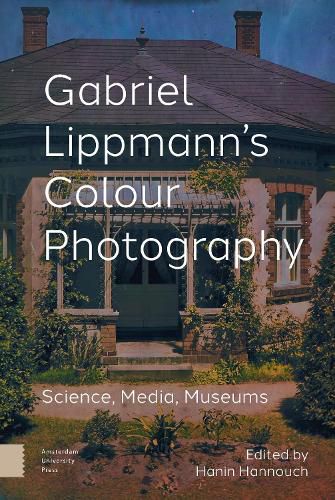Readings Newsletter
Become a Readings Member to make your shopping experience even easier.
Sign in or sign up for free!
You’re not far away from qualifying for FREE standard shipping within Australia
You’ve qualified for FREE standard shipping within Australia
The cart is loading…






Physicist Gabriel Lippmann’s (1845-1921) photographic process is one of the oldest methods for producing colour photographs. So why do the achievements of this 1908 Nobel laureate remain mostly unknown outside niche circles? Using the centenary of Lippmann’s death as an opportunity to reflect upon his scientific, photographic, and cultural legacy, this book is the first to explore his interferential colour photography. Initially disclosed in 1891, the emergence of this medium is considered here through three shaping forces: science, media, and museums.
A group of international scholars reassess Lippmann’s reception in the history of science, where he is most recognised, by going well beyond his endeavours in France and delving into the complexity of his colour photography as a challenge to various historiographies. Moreover, they analyse colour photographs as optical media, thus pluralising Lippmann photography’s ties to art, cultural and imperial history, as well as media archaeology. The contributors also focus on the interferential plate as a material object in need of both preservation and exhibition, one that continues to fascinate contemporary analogue photographers. This volume allows readers to get to know Lippmann, grasp the interdisciplinary complexity of his colourful work, and ultimately expand his place in the history of photography.
$9.00 standard shipping within Australia
FREE standard shipping within Australia for orders over $100.00
Express & International shipping calculated at checkout
Physicist Gabriel Lippmann’s (1845-1921) photographic process is one of the oldest methods for producing colour photographs. So why do the achievements of this 1908 Nobel laureate remain mostly unknown outside niche circles? Using the centenary of Lippmann’s death as an opportunity to reflect upon his scientific, photographic, and cultural legacy, this book is the first to explore his interferential colour photography. Initially disclosed in 1891, the emergence of this medium is considered here through three shaping forces: science, media, and museums.
A group of international scholars reassess Lippmann’s reception in the history of science, where he is most recognised, by going well beyond his endeavours in France and delving into the complexity of his colour photography as a challenge to various historiographies. Moreover, they analyse colour photographs as optical media, thus pluralising Lippmann photography’s ties to art, cultural and imperial history, as well as media archaeology. The contributors also focus on the interferential plate as a material object in need of both preservation and exhibition, one that continues to fascinate contemporary analogue photographers. This volume allows readers to get to know Lippmann, grasp the interdisciplinary complexity of his colourful work, and ultimately expand his place in the history of photography.